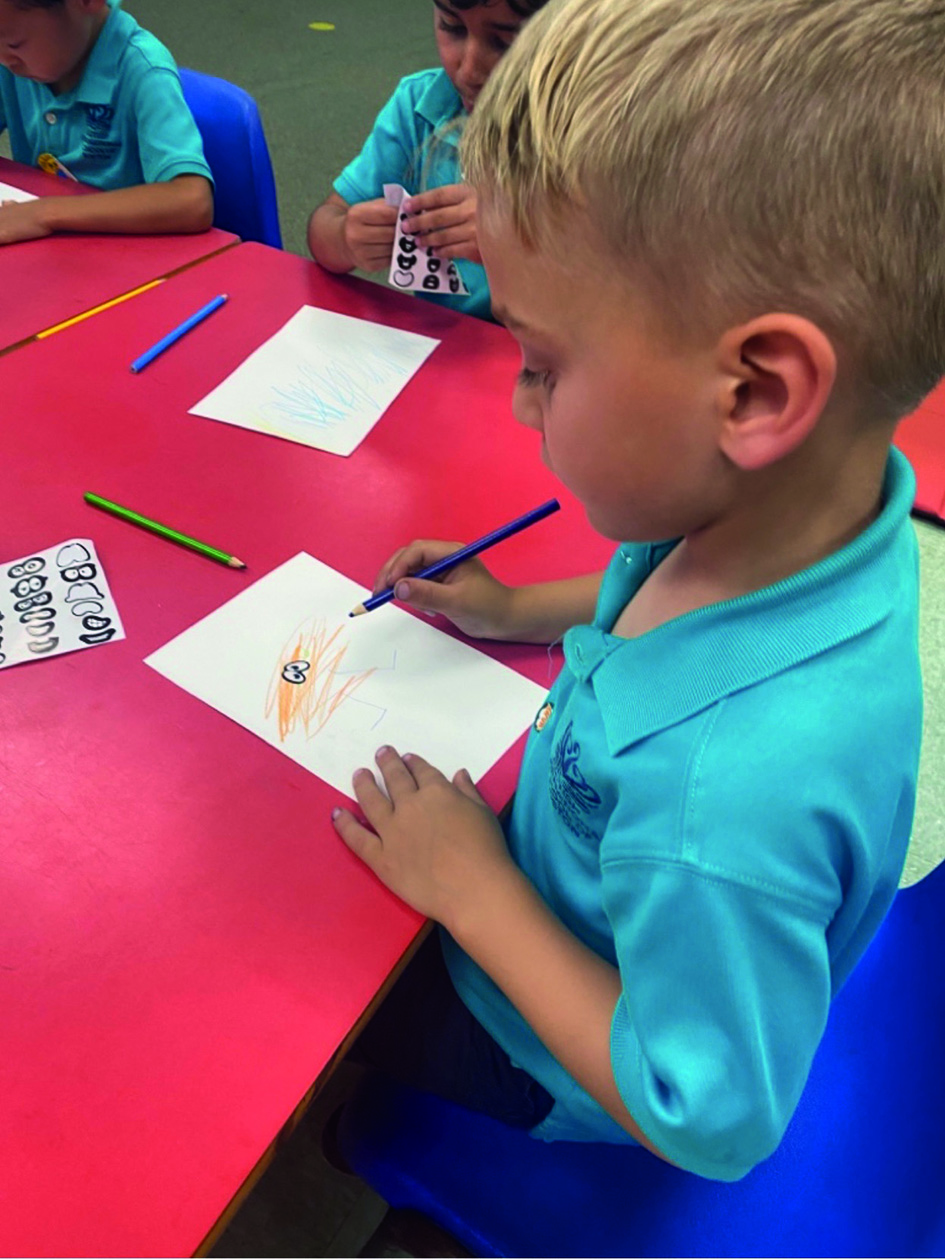
Mark-making is a means of children expressing themselves. While it is a precursor to more formal writing, it is a sensory and physical experience which links to a wide range of skills, from literacy to maths. Children use mark-making to communicate, tell stories and to express themselves, solve problems, make shapes and depict numbers.
It is the role of practitioners to provide a variety of mark-making activities and opportunities that will excite, entice and engage children. At our school, we have whiteboards, chalkboards and a range of writing opportunities all around the class.
ACTIVITY IDEAS
Scribble monsters
A fun activity for toddlers, which was also loved by our Reception children, was creating our own ‘scribble’ monsters. The children had a great time being allowed to just scribble and explore mark-making in a completely free, open and non-judgmental way. Once the children had finished their scribble masterpiece, they added eyes and mouths to create their monsters.
Neon crayons and black light
The children in Reception absolutely loved exploring neon crayons. On first sight, they just look like bright colours, but put under a black light, the colours appear to glow. Even the children in my class who are reluctant to explore any type of art material were drawn to this activity. I observed the children being very purposeful with their drawing. This also promoted some scientific enquiry as they took their drawings into the bathroom with the lights turned off to make their pictures glow even more.
Spy pens and hidden writing
 Children love to be cunning, so our spy pens were another hit. The children enjoyed writing secret messages and pictures for their friends to then find using the black light located in the cap of the marker. They especially loved being able to write silly words that their teachers didn't know about, particularly ‘pee’ and ‘poop’!
Children love to be cunning, so our spy pens were another hit. The children enjoyed writing secret messages and pictures for their friends to then find using the black light located in the cap of the marker. They especially loved being able to write silly words that their teachers didn't know about, particularly ‘pee’ and ‘poop’!
The children also relished writing in hidden places. Attaching paper to the bottom of tables is a great way to entice children to do this in an adventurous and physical way. The children loved the challenge of lying on the floor and writing on the bottom of the tables.
Feet painting
Even our youngest pupils can have fun exploring various mark-making tools and they don't always have to use their hands. Our toddlers (and teachers) enjoyed painting their feet and creating their own marks in this way. The children initially enjoy the sensation and strangeness of painting their feet, but soon become engrossed in the way the colours mix.
Whiteboard table
Last year I noticed that the children loved writing and drawing on the whiteboards. I found adhesive whiteboard paper and covered one of the tables in it. The children gravitated to it, as they often do when there is a new resource. I expected that interest in the table would decrease as the term progressed; however, the children still loved to write and draw on it even up to the last week of the school year. Quite often, the children would spend time drawing and chatting to their friends, so not only were they developing their mark-making skills, but they were also bonding and improving their communication.
The great thing about the whiteboard paper is that it can be cut into different shapes and stuck just about anywhere.
Doodle books
Last year I gave each child in my class a personal exercise book with blank pages. After being assured that they wouldn't get in trouble for scribbling or making a mess of the book, and that they really could do whatever they wanted with the book, their mark-making flourished. The children loved having a special book all for themselves, and quite often, when they wanted some quiet time, they chose to draw or doodle in their books.
Once a few children took their doodle books out, more friends wanted to join in, and it would turn into their own little drawing and colouring club. At the end of the academic year the children loved looking back on the drawings and mark-making they created at the beginning of the year and comparing their skills to those they now have.









